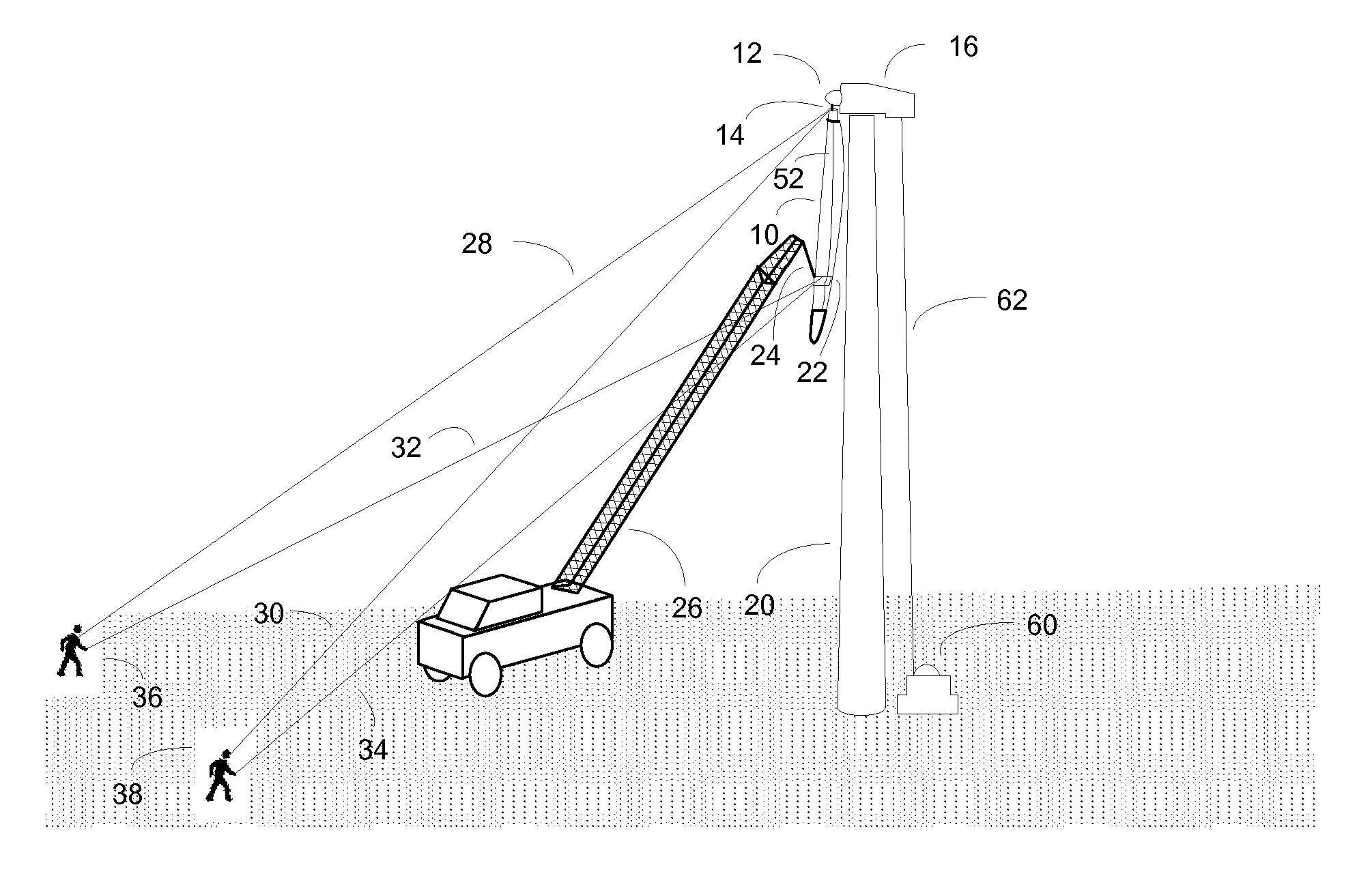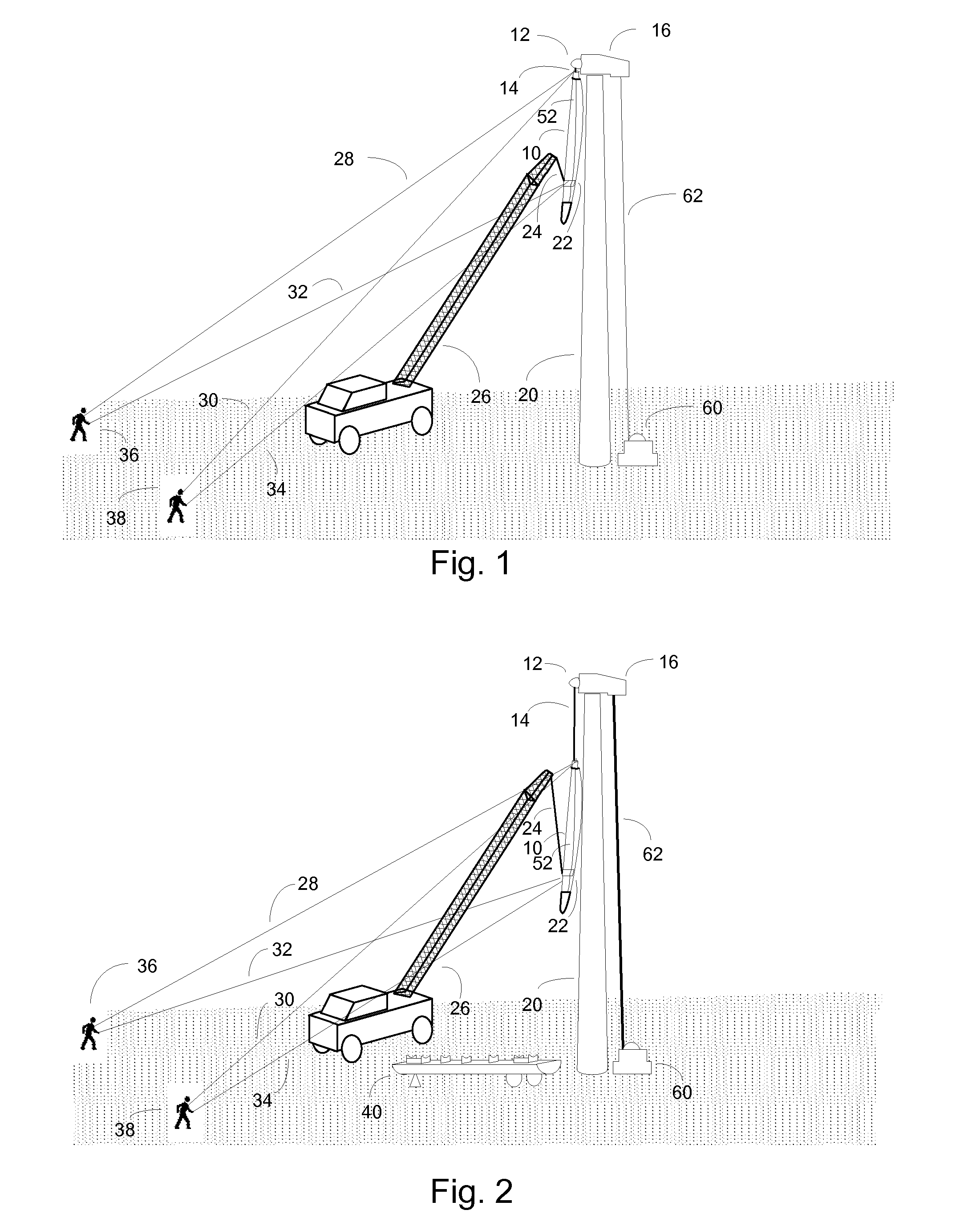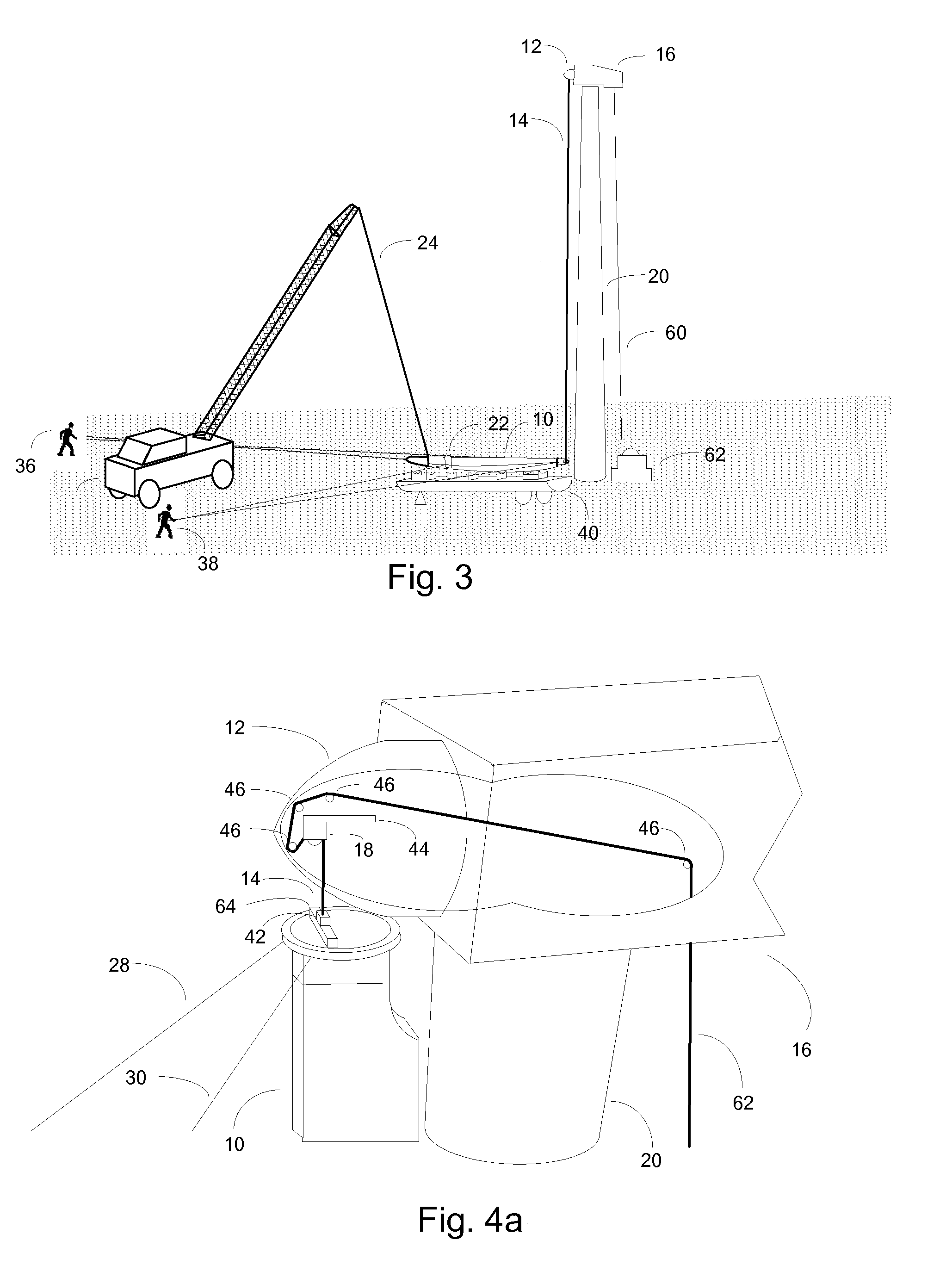Method for lowering and raising a wind turbine blade
- Summary
- Abstract
- Description
- Claims
- Application Information
AI Technical Summary
Benefits of technology
Problems solved by technology
Method used
Image
Examples
Embodiment Construction
[0030]Referring to FIG. 1, a blade 10 has been detached from a hub 12 and is being supported by main cable 14 which extends downward from a nacelle 16 at the top of tower 20. Cable 14 is attached to a traction hoist or winch which, in a preferred embodiment, is situated in nacelle 16. Slack main cable 62 has no tension on it, and feeds down from wind turbine tower 20 where it is taken up by take-up spool 60. In other embodiments the take-up spool may also be located in the nacelle, or the winch may be situated at ground level rather than within nacelle 16. To hold the blade and lower it from the hub, the winch is used to provide the hoisting power.
[0031]A tip end shoe 22 fits around the lower section of the blade, and is held in place with a suspender cord 52 that extends longitudinally along the blade between the tip end shoe 22 and a collar 54. The tip end shoe forms the lower part of a harness that holds the blade at a desired orientation. In a preferred embodiment, with a blade ...
PUM
| Property | Measurement | Unit |
|---|---|---|
| Weight | aaaaa | aaaaa |
| Length | aaaaa | aaaaa |
| Distance | aaaaa | aaaaa |
Abstract
Description
Claims
Application Information
 Login to View More
Login to View More - R&D
- Intellectual Property
- Life Sciences
- Materials
- Tech Scout
- Unparalleled Data Quality
- Higher Quality Content
- 60% Fewer Hallucinations
Browse by: Latest US Patents, China's latest patents, Technical Efficacy Thesaurus, Application Domain, Technology Topic, Popular Technical Reports.
© 2025 PatSnap. All rights reserved.Legal|Privacy policy|Modern Slavery Act Transparency Statement|Sitemap|About US| Contact US: help@patsnap.com



